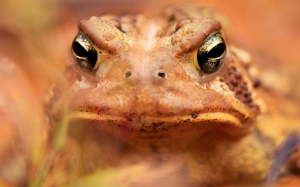
Long Exposure Abstract of birch trees.
As photographers we usually strive to create the sharpest images we can. But do we always need our images to be sharp? Sometimes we can make an image more compelling by removing the clarity and detail. If an image is blurred we can place more emphasis on the color and shapes within the image. You’ll need to use long exposures to create blur in your images. Wider lenses will require longer shutter speeds to create a pleasing blur, while longer lenses will blur images easier at shorter shutter speeds. Using Shutter priority at speeds in-between 1/10 of a second and 1 second will usually create nice blurs. It can be difficult to get long enough shutter speeds to create these blurs during midday so filters may need to be added. Neutral Density filters are dark pieces of glass which screw onto the end of your lens to provide longer exposures. Circular Polarizers can also help cut light. I try to avoid using very narrow apertures when doing abstracts because it makes dust spots more evident. I also always keep my camera at its lowest ISO – which is 100 – for my abstract blurs. Turn off any type of lens stabilization. Make sure that you image is noticeably blurry and not just a little blurry. If it’s only a little blurry viewers may assume the shot was supposed to be in focus but was an error on the photographer’s part.
Different subjects work better for different blurs. During last fall’s peak colors I knew another sharp image of this group of birch trees would be nice but conventional shot. Instead I switched my camera to a very long exposure and moved the camera downward during the exposure. This caused the entire scene to blur in the direction of the trees. The orange contrasting against the white birch trees made this into an interesting shot.

Budding Tree Abstract created with a zoom blur
Moving the camera up or down during the exposure won’t always result in a good abstract image. For example I shot this above image of a budding tree a few weeks ago using a zoom blur. I used a long enough exposure to zoom my lens from its tele end to its wider end to obtain this almost exploding like effect. This helps bring you viewer’s eye into the center of the image. When doing zoom blurs I prefer to use a manual exposure mode. This makes it so my exposure doesn’t vary while zooming so I can still obtain details within the lights and darks.

An abstract image of a sunset creating by doing a zoom blur while turning the camera
Lastly my favorite blurred abstracts can be obtained from spinning the camera while zooming the lens during a long exposure. To obtain this next image I pointed my Nikon D200 and Tokina 12-24mm f/4 wide angle lens at the setting sun which was peering through a mass of trees before it hide its face under the horizon. I extended my arms until my elbows were locked with my right had grasping the camera and my left hand grabbing the lens. The camera was held vertically. I turned the camera so it would be in the horizontal position while simultaneously zooming the lens. This creates a circular mildly vortex like blur. All you need to do is turn the camera while changing focal lengths. This makes the lines in the image draw the viewer’s eye back into the shot. I also used this effect a week ago when photographing trees in a local park. This created an almost Van Gogh like post-impressionistic look to the image which I especially like in this final image.

An abstract of a tree created using a zoom blur and turning the camera.
– Ryan Watkins
Filed under: Ryan Watkins, Technical Tips | Leave a comment »


 http://www.flickr.com/groups/naturesbeststudents/
http://www.flickr.com/groups/naturesbeststudents/



















